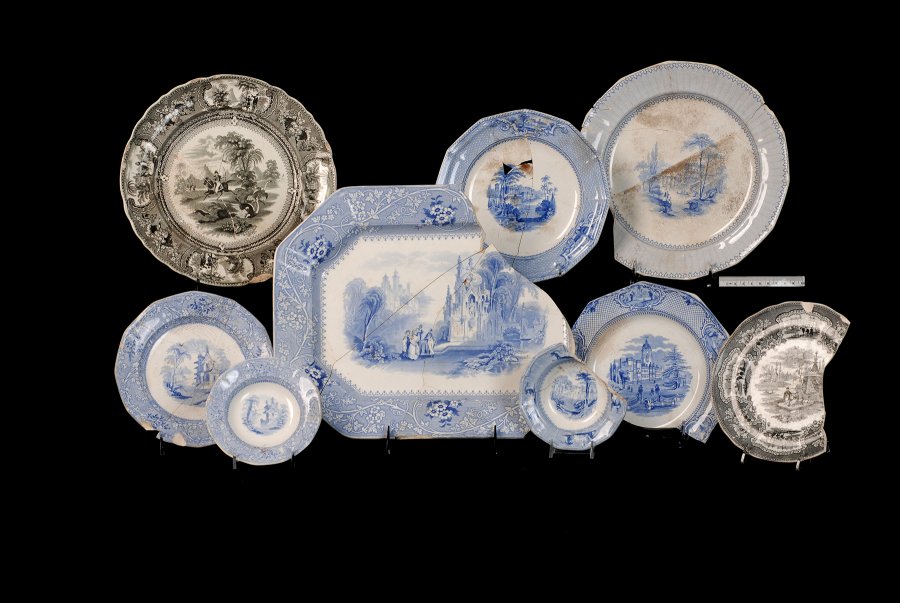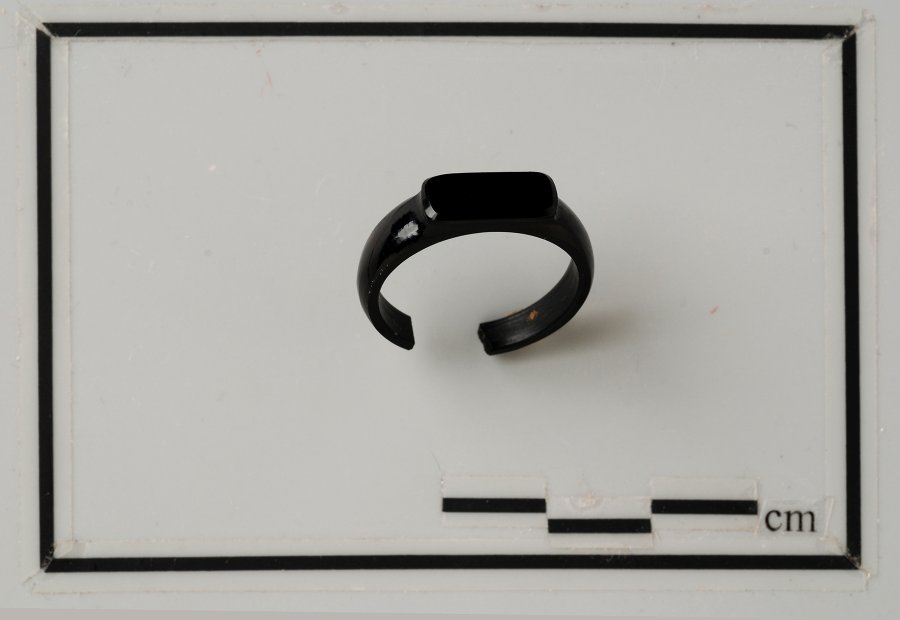The 7 Hawley Street excavations produced a wealth of information on the past of Indigenous people and the development of Binghamton. Indigenous cultural material was relatively sparse but definitely present. Artifacts associated with site use by Indigenous people primarily consisted of lithic debitage (flakes or pieces removed from a larger piece of chert when manufacturing stone tools) and indicate that the area was used for short-term activities, possibly associated with the long-term, intensive land use focused on the confluence of the Chenango and Susquehanna Rivers.
Material culture from the 19th and 20th centuries was considerably more extensive and allowed us to interpret several aspects of daily life for residents of the block. The most varied and numerous artifacts from the 19th century are from two privies at the site: a deeply buried privy associated with the Bartlett residence (c. 1840-1860) and a large privy belonging to a boarding house, the White Horse/Franklin Hotel (c. 1885-early 20th century). The artifact profile from the two privies, one associated with an upper class family of the early to mid-19th century and the other linked to a working class boarding house, are remarkably similar. Similarities between disparate contexts of an upper class household and a working class boarding house are related to important changes in socio-economic structures and consumptions practices over the 19th century.
As Binghamton grew and developed into a regional urban center, the 7 Hawley Street project area transformed from an upper class residential area to a commercial and residential area for the working class. In a very short period of time during the mid-19th century, area lots were subdivided and a row of commercial structures was erected along Washington Street that included several saloons, a tin/stove shop, and a bowling saloon; Water Street featured beer gardens and working class boarding houses. The area was now a hive of working class leisure and life. Archaeology traces this transition through trash deposits, foundations, and landscape features that speak to Binghamton’s economic growth and the conditions in which its residents lived and worked.

Transfer print ceramics from the Bartlett privy.

A glass ring, one of the few personal items from the Bartlett privy.
Read more here.